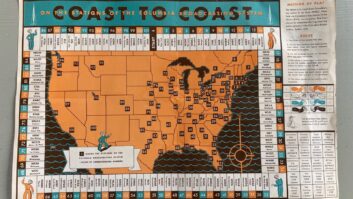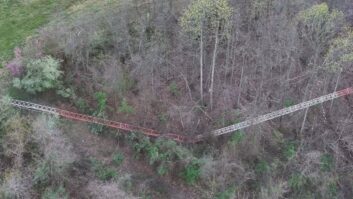An earlier version of this story described the rule change as proposed. The change actually is part of an FCC report and order, and thus appears to be final, pending only publication in the Federal Register.
The FCC’s recent action to strike the Fairness Doctrine from Part 73 of the Code of Federal Regulations got most of the news attention. But another, lower-profile change is likely to be greeted warmly by the engineering community.
It’s called the “Final RF Link” prohibition. When that comes off the books, broadcasters will have broadband STL/TRL options on 11, 18 and 23 GHz and other bands. Radios and antennas for these frequencies are available from companies like DragonWave and Trango Systems.
The prohibition was designed to keep broadcasters from using private fixed microwave links as STLs, obliging them instead to Part 74 frequencies assigned to broadcasters. Cris Alexander, director of engineering for Crawford Broadcasting and contributor to Radio World, writes in articles for Crawford’s engineering newsletter and the newsletter of SBE Chapter 48 that the FCC has removed the rule.
Though the original purpose of the prohibition was at least somewhat understandable, Alexander wrote, new uses related to HD Radio, RBDS, transmitter GUIs and remote controls (not to mention DTV) put demands on STL bandwidth that Part 74 frequencies might not meet. “This demand for bandwidth has perhaps hit radio harder than television, since radio has only 950 MHz frequencies available under Part 74 (except for those who have grandfathered 18 GHz frequencies).”
“There simply are not enough frequencies nor enough bandwidth available in the Part 74 950 MHz band to accommodate the bidirectional throughput rates that we need to feed multiple streams of audio for analog, HD and multicast channels plus PSD and auxiliary date, remote control, security, satellite feed backhaul and all that stuff that goes along with radio these days,” he wrote. “Long gone are the days of feeding the composite output of the processor to a composite STL and connecting the output of the receiver right to the transmitter’s exciter, at least in the major markets.”
Alexander noted that some broadcast companies have obtained waivers of the “Final RF Link” prohibition in recent times. His company, Crawford, had not sought one, finding other solutions; in three markets, it got around the prohibition by stating in its applications that an unlicensed 802.11 linkwould constitute the final RF link to the transmitter. “That was never questioned, and we have so far had good success getting grants within 60 days or less.” Those systems, he said, offer various technical benefits.
“But with the ‘Final RF Link’ prohibition gone, we will soon have some options that we did not have in the past,” he concluded. A planned 18 GHz link in Chicago, for instance, can benefit. “With no prohibition in place, we can directly cable to the on-tower radio, eliminating a possible point of failure – two, really, if you consider the on-tower network switch as a possible point of failure – and a bandwidth bottleneck. Of course we will have to pay a lot of attention to lightning/surge suppression that we could have otherwise ignored.”
Alexander called removal of the rule a “bit of long-overdue housecleaning.”










